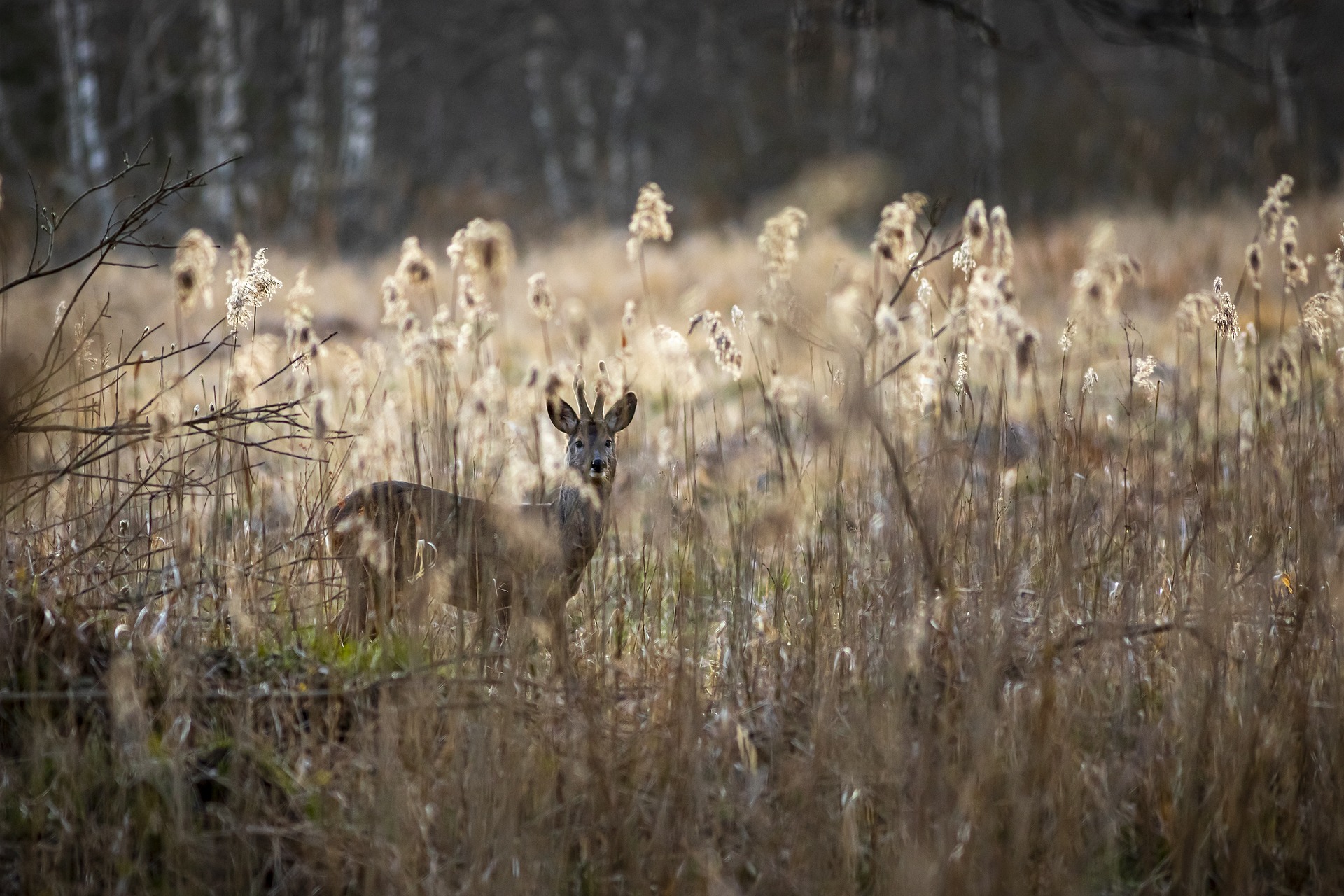The European roe deer (Capreolus capreolus) is a small to medium-sized deer species native to Europe and parts of Asia. Here are some key features and characteristics of the European roe deer:
- Appearance: European roe deer have a compact body with relatively short legs. They typically stand about 60-75 cm (24-30 inches) tall at the shoulder and weigh between 10-25 kg (22-55 lbs). Their coat varies in color depending on the season and individual, but it generally ranges from reddish-brown to grayish-brown in summer and becomes grayer and thicker in winter. They have a distinctive white patch on their rump, which is visible when they raise their tail in alarm.
- Habitat: European roe deer inhabit a variety of habitats, including woodlands, forests, shrublands, grasslands, and agricultural areas. They prefer areas with a mix of open spaces and dense cover, where they can find food and shelter. They are adaptable animals and can be found in both rural and urban environments.
- Distribution: European roe deer are widely distributed across Europe, from Scandinavia in the north to the Mediterranean in the south, and from the British Isles in the west to Russia in the east. They are also found in parts of Asia, including the Caucasus region and western Asia.
- Diet: European roe deer are herbivores and primarily feed on a variety of plant materials, including leaves, shoots, buds, fruits, and grasses. They are selective feeders and may browse on a wide range of plant species depending on availability and season.
- Behavior: European roe deer are primarily crepuscular, meaning they are most active during dawn and dusk. They are generally solitary animals, although they may form small groups, especially during the winter months. They are agile runners and can reach speeds of up to 40-50 km/h (25-31 mph) when fleeing from predators.
- Reproduction: Breeding occurs in late summer to early autumn, with females giving birth to 1-3 fawns after a gestation period of around 9 months. The fawns are born with a spotted coat, which provides camouflage against predators. They are nursed by their mothers for several months before becoming independent.
- Conservation: European roe deer populations are generally stable and not considered threatened at the global level. However, they may face local threats from habitat loss, hunting, predation, and collisions with vehicles. Conservation efforts aimed at protecting their habitats and managing populations sustainably are important for their continued survival.
Overall, the European roe deer is a fascinating and iconic mammal species, widely distributed across Europe and appreciated for its beauty and ecological importance in forest and woodland ecosystems.
Visited 372 times, 10 visit(s) today
Views: 425
Subscribe to the newsletter:
